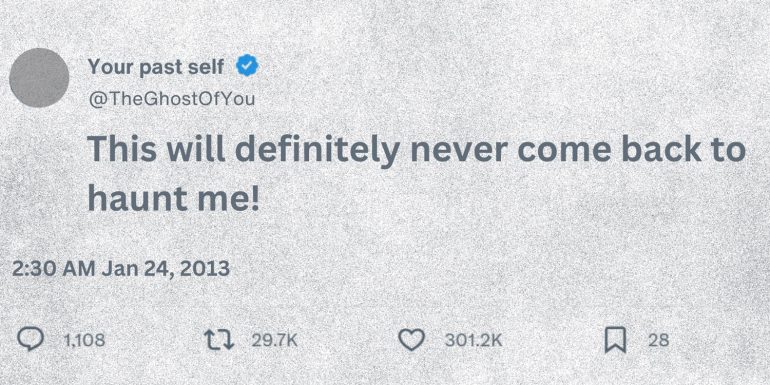We used to bury time capsules on purpose — now we’re building them on social media without realising what we’re preserving
You probably haven’t really thought about your digital footprint since that lesson back in school where the teacher told you a horror story about someone getting fired after posting a video of themselves drunk. Back then, the term digital footprint felt like a cautionary tale for the overly online. In 2025, it might mean something else – especially if you stop scrolling for a second and think about how nothing on the internet is ever really forgotten.
The internet is a forever time capsule, with one distinct difference from traditional ones – it’s unintentional. It’s filled with photos of your friends from ten years ago but also with slightly offensive tweets from when you were too young to know better.
How big is this time capsule? Putting a number to it might make it easier to imagine. According to marketing company WordStream, 95 million photos and videos are shared on Instagram every day. The worst part is we’ve lost control. This time capsule has grown on its own and now it’s just… there. Everything you’ve ever put online is collecting dust on the digital shelf, ready to be accessed at any point – two days or 20 years from now. You never know when it’ll come back to bite you in the ass.

Sure, you could delete something, but someone might have screenshotted it, so it’s still up in the digital ether. You might think – I’m not Beyonce or Gaga; who would care enough to screenshot something I posted? Well, you never know. Jealous ex-boyfriend? A past friend who now resents you? Your mum?
The author of The End of Forgetting, Kate Eichhorn, told Vox: “The ability of something from the past to interrupt the present has been amplified. We’re just beginning to face the consequences.” In an age where social media has taken over every single aspect of our lives, we’re experiencing something called a time collapse – “a temporal blurring that muddles past and present”, as described by Sara Reinis, writing for Real Life Mag.
It’s getting harder to separate who we used to be from who we are now. All we have to do to see our past selves in all their glory is scroll back on Tumblr and read the dramatic post we made when we were fourteen. Facebook will remind you, unprompted, about things you posted on this day four, six, ten years ago. Even though Instagram stories are supposed to be temporary, you can archive them on your profile.
Designed to stay
We see the effects of this every day when yet another public figure gets cancelled. Kevin Hart. James Gunn. Colleen Ballinger (the ukulele apology girl). Even Jenna Marbles! It’s usually over something way back in their past. They probably don’t even remember posting the offending article and they’ve since grown and moved on. They may have even apologised to whomever they hurt. But that doesn’t matter to the general public, whose favourite pastime is feeling morally superior.
Cancel culture doesn’t just affect famous people. An average Joe could post something questionable on X and if they’re unlucky, an internet detective will find out where they work and get them fired. If you have a certain amount of power that comes from money and existing in the public eye, you might be able to bounce back. If you’re Joe, you might not. Maybe this is just a long-winded version of what your teacher tried to tell you back in school: think before you post. But more than that – if this really is your time capsule, are you proud of what you’re leaving behind?

